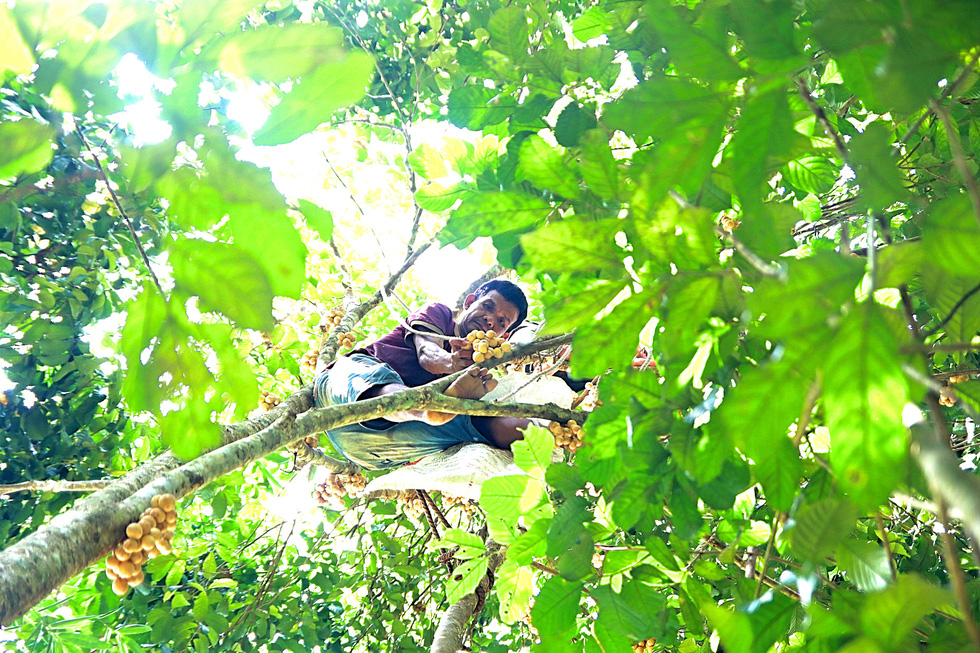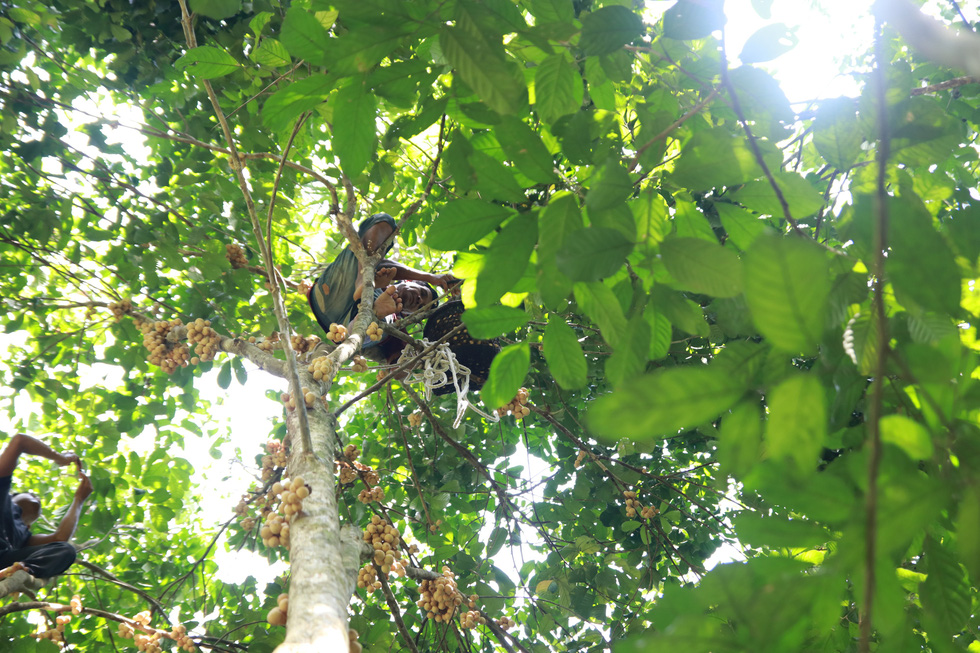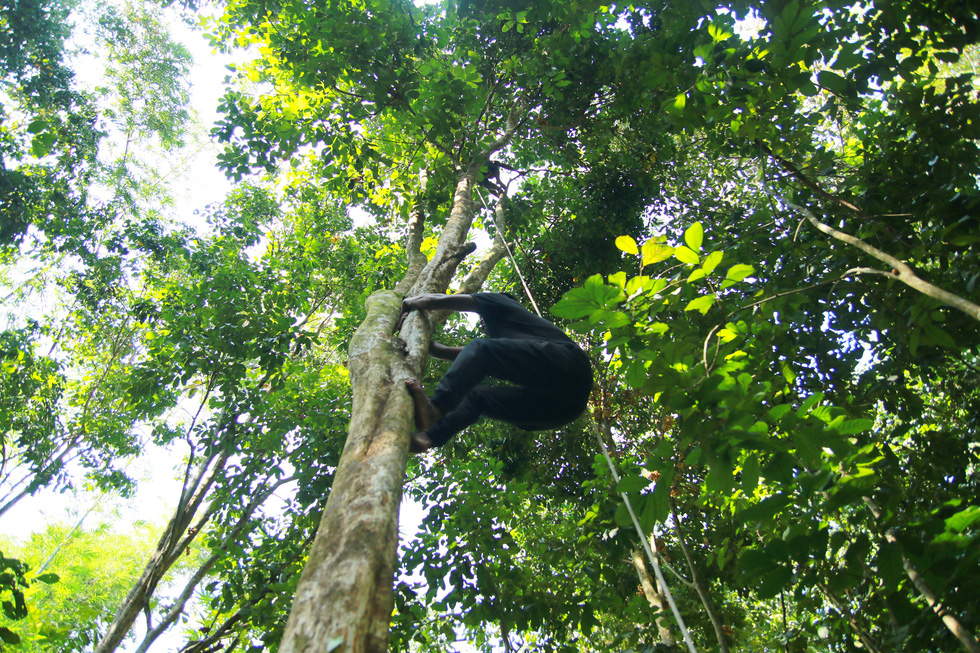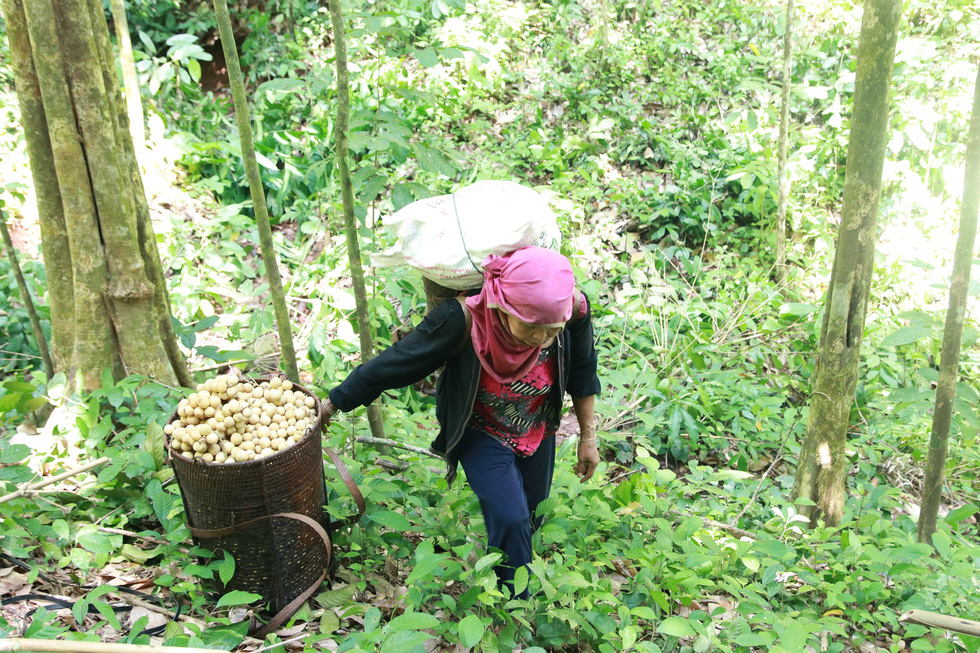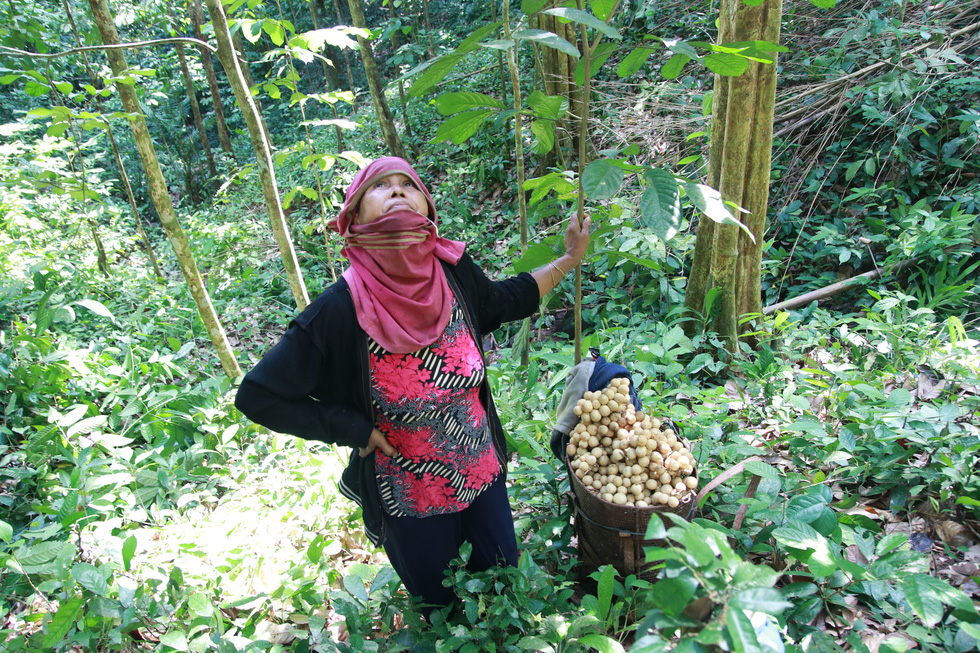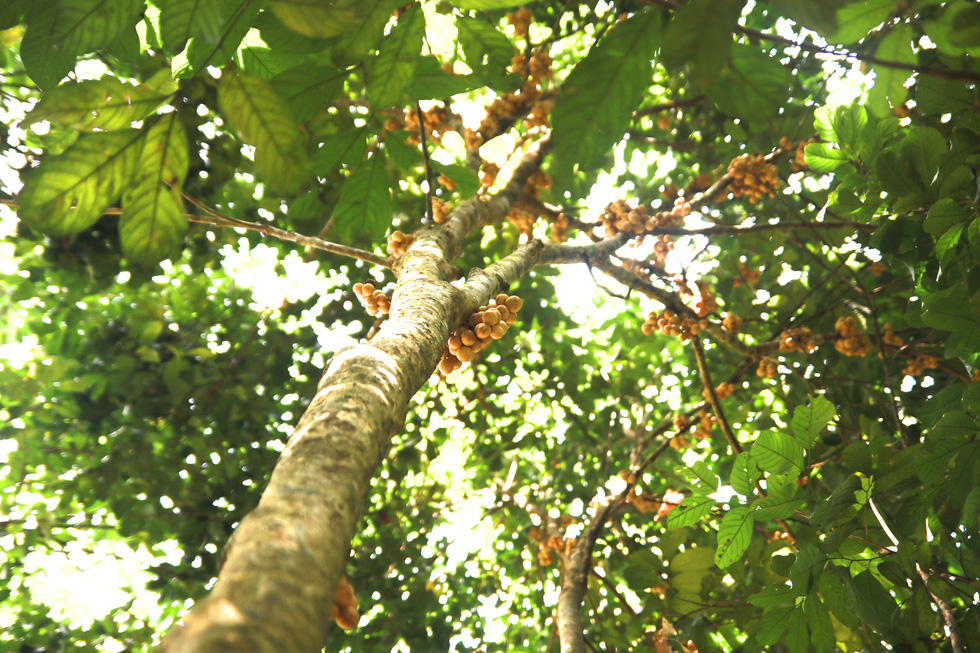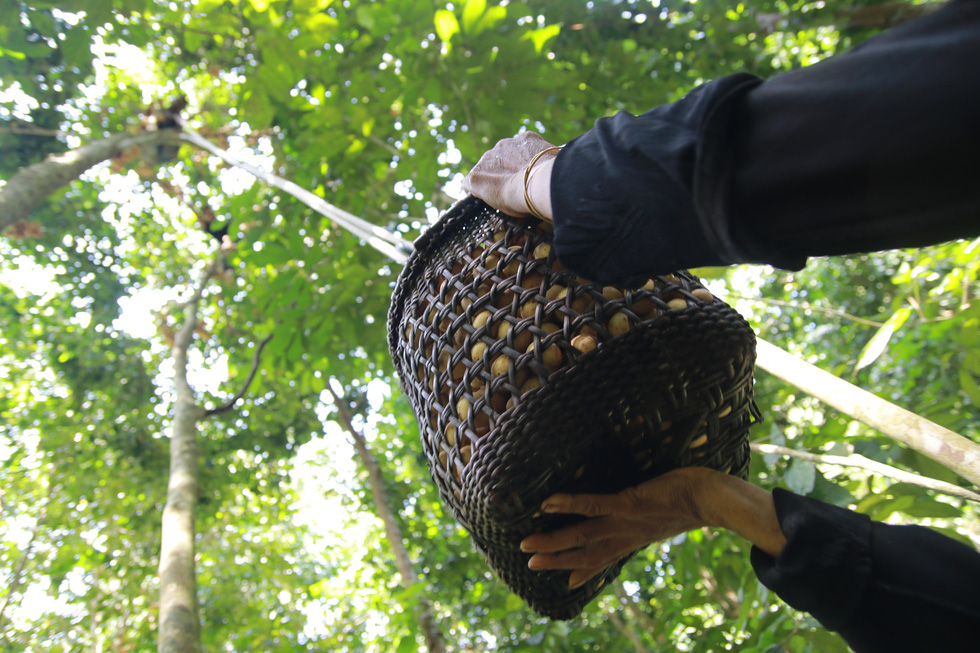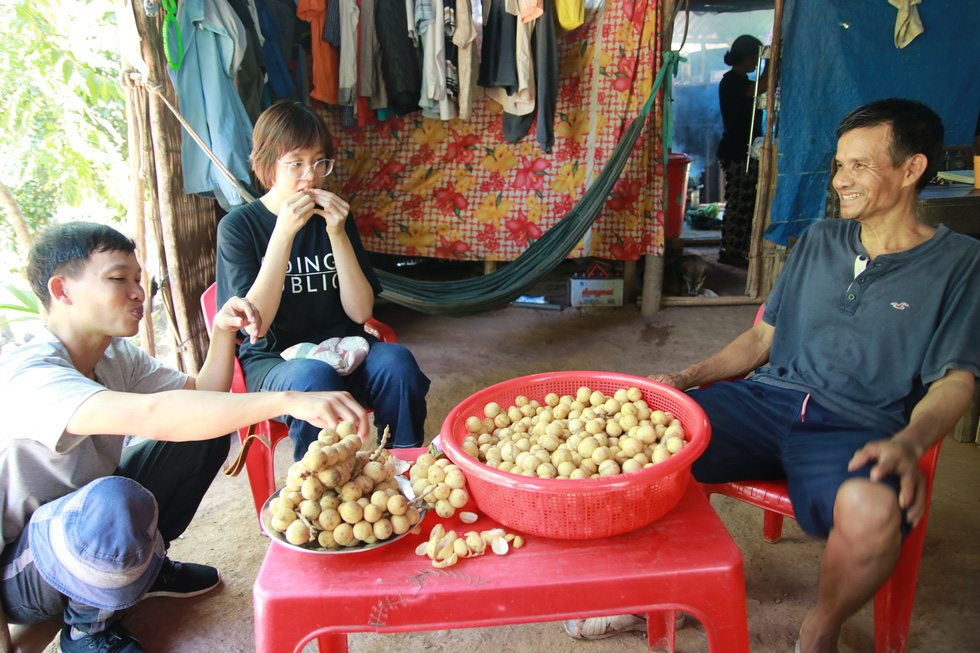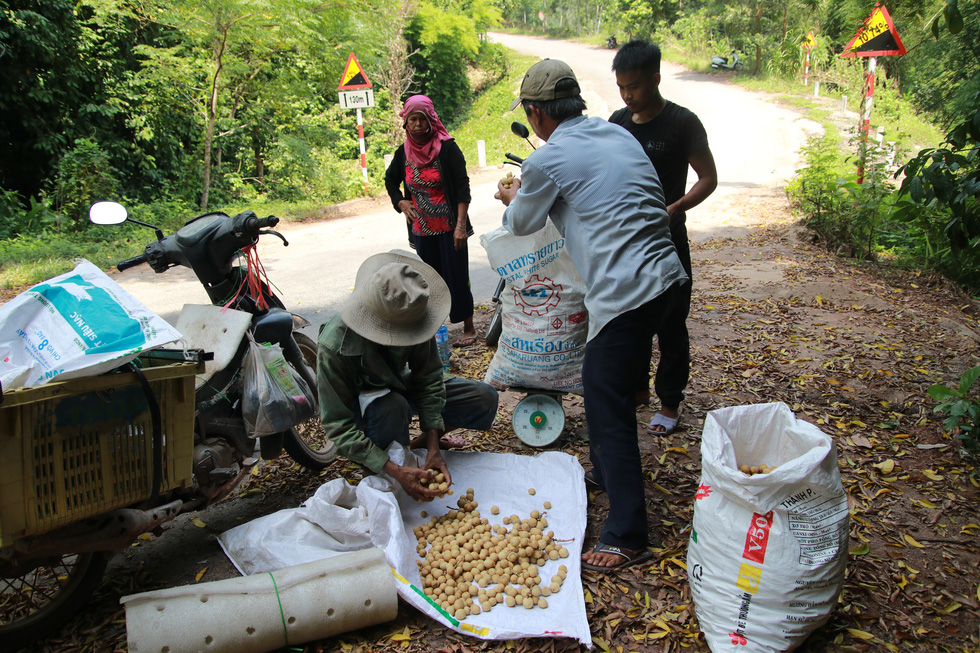When autumn comes to Dong Giang District in Quang Nam Province in around September, local Co Tu people with their traditional baskets stroll around old forests to begin their langsat harvest season.
As langsat trees start bearing fruits in the fourth month of the lunar calendar, people can harvest ripe fruits in August, before the rainy season.
Langsat trees are hard to grow and prefer cool weather. They can only be planted near ravines and depend on weather for productivity.
Ky Xuan Binh, a resident in Ka Dang Commune, Dong Giang District, recalled the days of old when his ancestors explored forests and gave land to descendants.
The following generations keep their heritage and grow more and more langsat trees, which is why all Co Tu households have plenty of langsat gardens grown on mountains or in forests.
The households have between a dozen and around fifty trees each.
Some gardens are grown deep in a forest, prompting owners to walk two or three kilometers to harvest.
“The eldest tree is about 70 years old and 10 meters high, and can turn out nearly 100 kilograms of fruit in its best output. I have picked fruits from that tree since I was a young girl,” A Lang Thi Giay, 60, said.
“Langsat trees favor cool weather. Therefore, too much rain or sunlight can crack fruits, and they cannot be sold,” Ky Xuan Binh expressed his knowledge about the plant.
“Hundreds of kilograms of langsat can be harvested in a bumper season, fetching more than VND20 million [US$862],” he added.
“In contrast, we get just several kilograms in a poor harvest, even nothing.”
Covering the forests of Dong Giang are the giant langsat trees with their ages possibly longer than a human lifespan. They continue growing up through many generations of Co Tu people.
The langsat seasons have become a part of local people’s childhood.
“I usually picked langsat fruits with my parents when I was little. I felt the excitement every time the langsat season came. My family had square meals given a bumper harvest,” Ky Xuan Nui recalled.
He is now 31 and lives in neighboring Da Nang City.
|
|
| Ky Xuan Binh still climbs langsat trees every harvest season despite being in his 60s. Photo: Tran Duy Minh / Tuoi Tre |
|
|
| Some trees live longer than a human lifetime and are over 10 meters high. Photo: Tran Duy Minh / Tuoi Tre |
|
|
| Post-harvested langsat fruits are brought out of forests right to traders. Photo: Tran Duy Minh / Tuoi Tre |
|
|
| A Lang Thi Giay says that a bumper crop may yield high profits for local people. Photo: Tran Duy Minh / Tuoi Tre |
|
|
| The most fruitful tree can produce nearly 100 kilograms of fruits. Photo: Tran Duy Minh / Tuoi Tre |
|
|
| Langsat harvests contribute significantly to the livelihood of Co Tu people. Photo: Tran Duy Minh / Tuoi Tre |
|
|
| Visitors are served langsat fruits when they come to a Co Tu family in the langsat season. Photo: Tran Duy Minh / Tuoi Tre |
|
|
| Since transportation to the mountainous area in Dong Giang has been improved, langsat prices are soaring, standing at around VND22,000 per kilogram this year. Photo: Tran Duy Minh / Tuoi Tre |
Like us on Facebook or follow us on Twitter to get the latest news about Vietnam!



